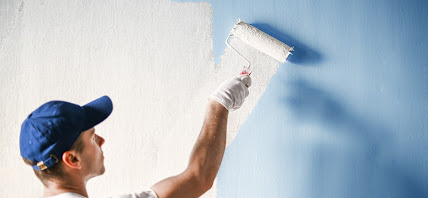What Makes the Wrought Iron Restorations Important?
Gates
and anchors have traditionally been crafted from wrought iron. It can withstand
some rust, but it won't completely stop it. Learning how to restore wrought
iron is a great way to save money and keep your iron looking great for a long
time to come.
Iron
may be refined into wrought iron by a process called smelting. Its appearance
and feel are quite similar to those of wood. Gates, railings, chains, and so on
are all common uses for it in residential settings, where they lend an aesthetic
quality we term "character." Wrought iron's great malleability and
corrosion resistance have made it a popular material since the nineteenth
century. Nonetheless, wrought iron will corrode in the presence of oxygen over
time, just like any other iron. Following these easy instructions, you may revitalize
your wrought iron furniture or hire restauration fer forgé professionals for the job.
Repairing Rusted Iron
Get
yourself a huge bucket of water, a boiler suit, a metal cutter, a sponge and
scrubber, and some rust-resistant paint to start repairing your wrought iron.
Get Ready
The
initial steps in any restoration project should be cleaning and removing any
damaged components. If it's severely broken, you might have to remove certain
pieces. To do this task, you need employ the use of a metal cutter. Wear
protective equipment like gloves and glasses. Use a coarse brush or wire brush
to go over the surface and remove any flaky areas.
Sandblasting
Sandblasting
is a fast and efficient way to smooth out uneven areas and get rid of rust. For
finishing, it employs abrasive particles and intense pressure. Select a tool
that is well suited for the metal you are working with. Portable blasters may
be more appropriate for larger areas than their cabinet counterparts. It's also
crucial to use the right abrasives. If you want to get a smooth finish without
hurting your metal, use glass particles as an abrasive.
Scrubbing
Put
some dish soap into a bucket of water, then fill the bucket up. Detergent
powder may be substituted instead. Get some bubbles to form on top by stirring
rapidly. Rub the metal with a coarse scrubber or brush that has been dipped in
the solution. This is a lengthy process but essential in the end.
Rust Proofing
After
the metal has been well cleaned, apply a rust-proof primer and allow it to cure
overnight. This should slow down the weathering process. Alternative methods
include using automotive wax. If you're going to paint your wrought iron, some
individuals recommend powder coating instead. Powder coating, often called
dry-brushing, is a method of painting that uses a fine metal powder instead of
liquid paint.
Here,
electrostatic force is used to apply the dry powder, and heat is subsequently
used to lock it in place. This approach delivers a more robust shield at a
higher cost. But according to Painters in Montreal professionals’rust-proof alone does the job just fine.
Conclusion
Wrought
iron may be restored simply but takes some time. Keep your wrought iron shiny
and rust-free with frequent cleanings. Restoration by experts is a time saving
and cost effective option. The at-home approach isn't cheaper, but it's not
much more expensive, either. Work always pays off in the end. Always ensure
your safety when performing this task outside. Do not skip out on the gloves
and safety glasses; they are essential to your safety.




Comments
Post a Comment